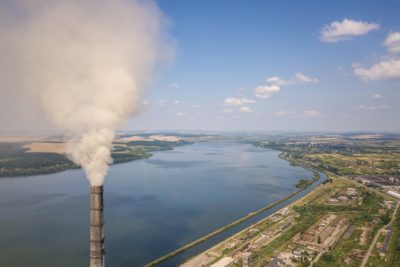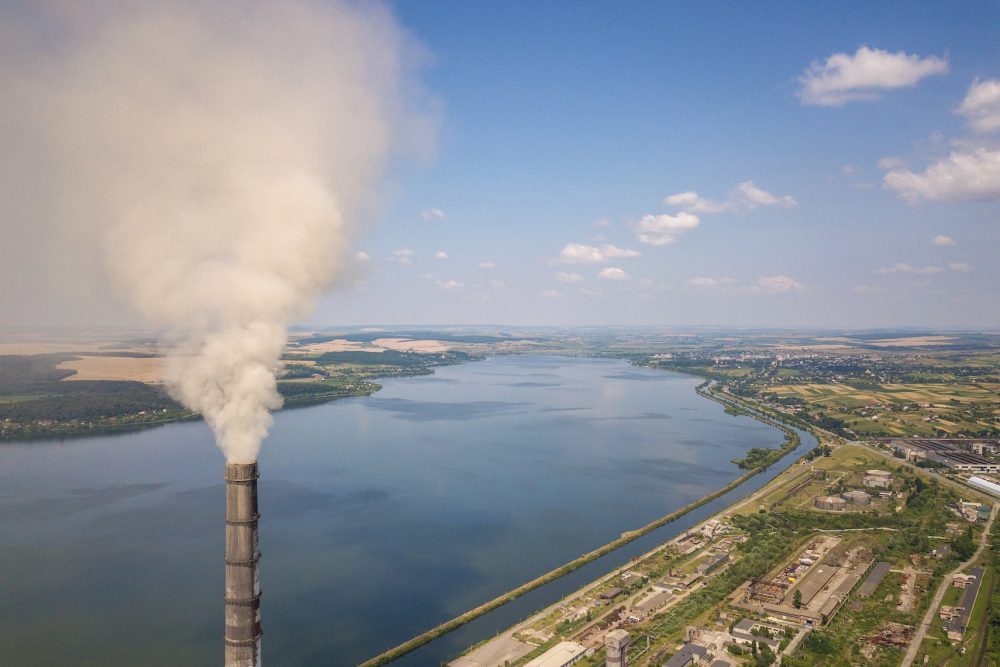Plastics, greenhouse effect, carbon footprint and global warming.


Date of publication 29 June 2020
Authors Shen, Maocai; Huang, Wei; Chen, Ming; Song, Biao; Zeng, Guangming; Zhang, Yaxin
Sources (Micro)plastic crisis: Un-ignorable contribution to global greenhouse gas emissions and climate change. Journal of Cleaner Production 254, 120138 (2020)
Abstract
Abstract: The rapid development of plastic industrials has created a variety of plastic products, causing revolutionary progress in chemistry, physics, biology, and medicine. Large-scale production and applications of plastics increase their possibility of entering the environment. Previous environmental impact studies typically focused on the toxicity, behavior and fate; limited attention was paid on greenhouse gas emissions and climate change. With the increase of plastic waste, the threat of plastic pollution to the earth’s climate has been gradually taken seriously. Evidence showed that greenhouse gas emissions occur at every stage of the plastic life cycle, including extraction and transportation of plastic raw materials, plastic manufacturing, waste treatment and entering the environment. The oil and gas industries used to make plastics are the main sources of greenhouse gas emissions (from the extraction of raw materials to the manufacture of plastics). Emissions of greenhouse gases during manufacture are mainly controlled by the production facilities themselves, usually depending on the efficiency, configuration and service life of equipment. Additionally, there are some unintended impacts, including transport requirements, pipeline leakage, land use, as well as impeding forests as natural carbons sinks. Recycling of plastic waste energy seems to be a good way to deal with waste plastics, but this process will release a lot of greenhouse gases. With this energy conversion occurring, the incineration of plastic packing waste will become one of the main sources of greenhouse gas emissions. Furthermore, plastics released into the environment also slowly release greenhouse gases, and the presence of (micro)plastics in the ocean will seriously interfere with the carbon fixation capacity of the ocean. In its current form, greenhouse gas emissions from cradle to grave of plastics will reach 1.34 gigatons per year by 2030 and 2.8 gigatons per year by 2050. This will seriously consume the global remaining carbon budgets, thereby threatening the ability of the global community to keep global temperatures rising by below 1.5 degrees C even 2 degrees C by 2100. In order to achieve this goal, the total global greenhouse gas emissions must be kept within the remaining carbon budget of 420-570 gigatons. The accumulative greenhouse gas emissions from cradle to grave of plastics may exceed 56 gigatons by 2050 (approximately accounting for 10%-13% of the total remaining carbon budget). As the plastic industry plans to expand production on a large scale, the problem will worsen further. The World Economic Forum forecasted that by 2030, the production and use of plastics will grow at an annual rate of 3.8%, and this growth rate will fall to 3.5% per year from 2030 to 2050. However, there are significant challenges and uncertainties in this estimation, and challenge and uncertainty factors come from all aspects. Recently, several organizations and researchers have started to discern the relationship between greenhouse gas emissions and plastic industrials, but relevant research on these impacts is still in its infancy. Consequently, the contribution of plastic pollution to greenhouse gas emissions and climate change should be given immediate attention and it needs to further explore the impact of plastic pollution on greenhouse gas emission and climate change. The implementation of measures to solve or alleviate the (micro)plastic crisis was critical necessary and proposed: (1) production control of global plastics; (2) improving the treatment and disposal of plastic waste; and (3) assessment of the impact of global environmental (micro)plastics on climate. The SeaCleaners’ View : The use of plastics contributes to the greenhouse effect and thus to global warming. Recycling plastics is presented as a miracle solution. What is the best way to manage plastic waste? The effect of plastics on carbon sinks remains to be demonstrated. There are possible ways to improve the situation. The most important thing remains the evolution of our economic model.
If plastics are made from polymers of petrochemical origin, there is no doubt about this claim, if only in terms of the balance of materials, because at the end of their life, organic carbon will be transformed into carbon dioxide, which will promote the greenhouse effect because it comes from a fossil resource. In addition, as the authors of this article point out, all the greenhouse gases resulting from the production, transport and manufacture of these plastics are added. The envisaged doubling of global plastics production on the scale of a few decades will greatly exacerbate the problem if this organisation continues.
This claim is true if one only considers the material balance. This means that the organic carbon of the plastic polymer will remain in circulation in the so-called circular economy. The emission of greenhouse gases will therefore be delayed until its end of life. However, the number of recycling cycles that are possible for current polymers is quite limited. Beyond 5 to 10 cycles the quality is modified and makes its use much more complicated. It will then be recovered chemically or energetically. This number of cycles, if our economy remains in a hyper-productive model, is very fast. For example, for a PET water bottle, about ten cycles can be done in less than a year. So, in this case, recycling will not have made it possible to delay greenhouse gas emissions for very long. Moreover, all the transport and processing of the material for recycling will also generate greenhouse gases.
If you look at it only from the perspective of global warming, it is best not to manage plastics at the end of their life cycle. Indeed, in the case of petrochemical plastics, any attempt to recycle, chemically or energetically recover them at the end of their life cycle will generate carbon dioxide anyway. As plastics degrade very slowly in the environment, their landfilling or sedimentation on the seabed does not result in the release of greenhouse gases. It is obvious that this option is not desirable from an environmental point of view, as this waste also has impacts on wildlife and on the overall functioning of ecosystems. The quantification of these impacts and their feedback effects on our well-being and health are very difficult to quantify, but they are already being observed.
The extrapolation of some studies showing the effects of microplastics on phytoplankton metabolism is difficult to achieve at the global oceanic level. It is then complicated to conclude on the indirect effects of the slowing down of these metabolisms at the level of global warming, even if it is an important point to consider and study in the future. Similarly, the effect on photosynthesis of mangroves or forests that are subject to plastic pollution is still difficult to quantify. One could also add to the balance the fact that many plastic microparticles suspended in water will promote the development of diatoms that will attach themselves to its surface. In this case, pollution by the microplastics would therefore increase the carbon sink constituted by the photosynthesis of these microalgae. The reader will therefore find it very difficult to reason about balances when the data are not yet completely quantified.
Firstly, instead of favouring polymers of petrochemical origin or more generally from fossil resources, it is possible to consider renewable raw materials. These can come from agriculture or more generally from bacterial culture or fermentation (such as PHA, PHB, for example). In this case the carbon balance would be neutral because the organic carbon of the polymer would have been manufactured with inorganic carbon from the atmosphere. Of course there would remain all the transport and production operations that could generate greenhouse gases. Secondly, the energies used for these operations could be chosen from renewable resources. For example, solar, wind, hydroelectricity, energy from natural resources such as wood, biomass gas…Thirdly, the reuse of objects is to be favoured, which is quite different from material or chemical recycling. It implies a sufficient lifespan of the constituent polymers. In order for this option not to be energy-intensive, reuse must be at the consumer level. If a system of collection and therefore transport and cleaning is put in place, it will consume energy and therefore possibly produce greenhouse gases, unless we place ourselves in the energy models listed above.
We must move towards a production of material in reasonable, even frugal quantities, and stop the hyperproduction of objects as we know it today. For example, eliminate all single-use objects. It is not just single-use plastic but objects by themselves. The main contribution of plastic pollution observed in the environment is packaging and overpackaging. This is already a sector where it is relatively easy to reduce production.
Similarly, in many sectors, the system in place is still production planning based on past results. It is a system known as push flow. It generates a lot of unsold goods that are more or less well valued. The best example is the fashion industry. However, other systems exist that are called pull-flow systems, in which production is only triggered when the customer’s order is placed. They are well known in the automotive industry, for example. The weak point of this approach is the production lead time. The transition to Industry 4.0 should provide solutions by integrating the customer and his needs at a very early stage in the production and planning process.
With decreasing volumes, this necessarily implies rethinking where the added value of the economic partners will be. There is therefore a real in-depth reflection to be carried out jointly with consumers, political decision-makers and economic players.
Comments area